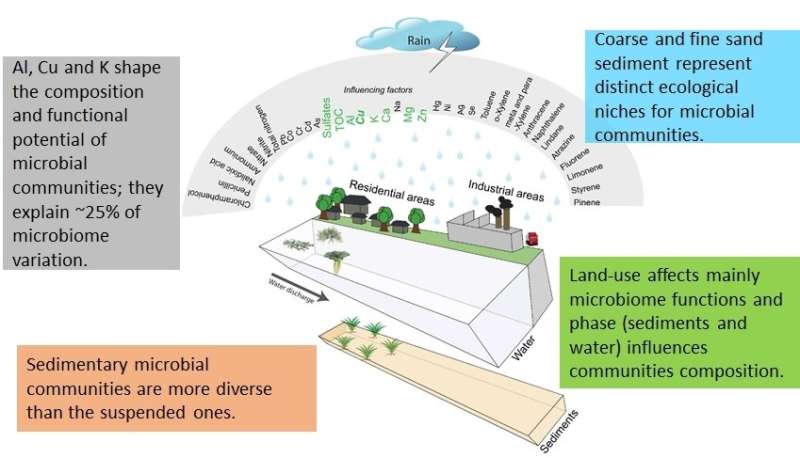Ecological functioning of urban waterways

NUS scientists have established key environmental drivers linking microbial ecology with urban design to enhance nutrient removal and attenuate algal blooms in urban waterways.
The growing demand for water supply in highly urbanised cities have led to an increased interest in the development of ecologically friendly waterways to better manage this resource. These eco-friendly waterways are specially designed to make use of naturally occurring microorganisms (microbial communities) and enhance their ability to perform important ecological services (e.g. cleansing the waterways). However, the dense interspersed land-use patterns and anthropogenic influences affects the natural ecological balance of the microbial community and makes it a challenge to use ecological approaches to maintain the water quality in urban waterways. There is a need to better understand the complex interactions between microbial communities and their urbanised environments at various scales, ranging from sediments in the waterway to large catchment systems and city networks.
The research team led by Prof SWARUP from the Department of Biological Sciences, NUS found that the sedimentary biofilms in the waterways are the major source of microbial communities which provide important ecological functions. These include removing excess nutrients and preventing the growth of blue-green algae in urban waterways. The research team also found that the presence of certain metal pollutants (namely copper and aluminium) when present in the waterways at very low levels (parts per million) can adversely affect the ecological functioning of these microbial communities. Apart from field studies, the research team also conducted lab-based experiments which mimic the environmental conditions of the waterways to arrive at their findings. These findings can potentially enhance microbial services, which are critical to sustain ecologically friendly waterways in rapidly urbanising environments.
A graduate student in the team, Mr Aditya BANDLA said, "The sedimentary biofilms in the urban waterways are composed of different sized sand particles. Although, the larger particles (coarse) and smaller particles (fine) exist together within the sediment habitats, they host very distinct microbial communities."
"We found that different sediment types provide different ecosystem services by their respective microbiomes and these findings can help with the monitoring of the ecological health of urban waterways. These are the first steps towards formulating ecology-inspired designs of next generation waterways," added Prof Swarup.
Singapore represents one of few cities worldwide that actively capture storm water to augment freshwater supplies. Singapore, with its highly managed landscape coupled with growing urban pressures, represents an ideal model to study how microbial communities in surface waters respond to such pressures. The illustration shows the key research findings for studying microbiome-driven processes in waterways.
More information: Gourvendu Saxena et al. Ecogenomics Reveals Metals and Land-Use Pressures on Microbial Communities in the Waterways of a Megacity, Environmental Science & Technology (2015). DOI: 10.1021/es504531s
Journal information: Environmental Science & Technology
Provided by National University of Singapore


















